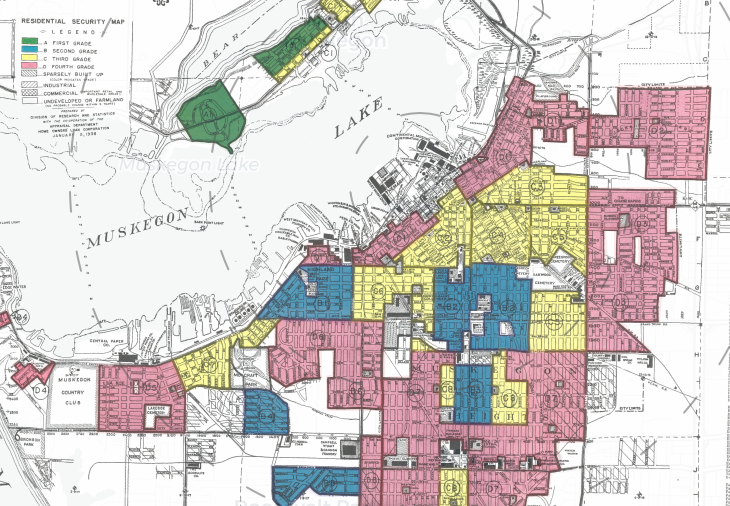It's February which means it's Black History Month. While we hope to honor/celebrate African American history and contributions every month of the year, this month we have taken the opportunity to educate ourselves and share about how systematic racism has affected Muskegon (and most cities across the USA) through the systematic process of redlining.
Redlining is the historical practice of denying services to residents of certain areas based on the racial or ethnic composition of those areas. Redlining in Muskegon resulted in some neighborhoods being underdeveloped, buildings being abandoned, businesses failing, increasing social problems and the removal of any incentives to invest.
According to the Muskegon property appraiser descriptions from 1937, many of the Muskegon communities that were redlined, such as Jackson Park, Muskegon Township, and Lake Side, where specifically blue-collar immigrant communities of Polish or Italian descent. Other communities like Downtown Muskegon and Muskegon Heights were white communities that suffered from the "infiltration of negros". African Americans who had moved to work in Muskegon foundries as part of the 1930's New Deal Era, made up approximately 15% of these communities.
As the 1940's saw the introduction of the GI Bill, a set of benefits made available to anyone who had served in the military for a minimum of 90 days, these redlined communities started to drastically change. The GI Bill was very popular giving education, training and mortgage benefits to any veteran who applied, however, these benefits were administered by local bureaucrats, who when faced with an overwhelming need and finite resources, favored white veterans over black. Many banks and mortgage agents went as far as refusing to provide loans to black veterans.
This created a huge disparity. The previously redlined white communities saw a huge rise in opportunities, education, and loans being freely available to them. The black communities were refused these opportunities. As the cost of living rose, white families in areas like Muskegon Heights, Nelson, McLaughlin, and the Downtown could afford to move out to the suburbs and live the American dream. A good education, training, a stable job, retirement at a good age were all made possible as a direct result of the government benefits given to white veterans. But for the black communities, there was no way out of the communities sidelined and labeled "Hazardous". Although The Fair Housing Act ended the practice of Redlining in the 1960's, discriminatory lending practices by banks and mortgage agencies against the black community continued through to the 1980's.
Seventy years after the beginning of these systematically discriminative programs, we can see the effects of this in Muskegon’s core city neighborhoods. Disinvestment has created less access to jobs, resources, and services, contributing to poor living conditions, concentrated poverty, bad health and greater economic instability. But more than this, we can see the resilience of neighbors in combating these historical abuses, we can see a community that has molded their oppression into a strength and pride, a community that has fought against the odds to bring this community back from the edge of despair and is moving forward, stronger and more determined than before. We see OUR community.
This is where we live. This is where Community enCompass and our neighbors are committed to building community, as we walk alongside each other, seeking justice and a better quality of life for all through long-term, sustainable changes. Come join us as we change the community from the inside out!



